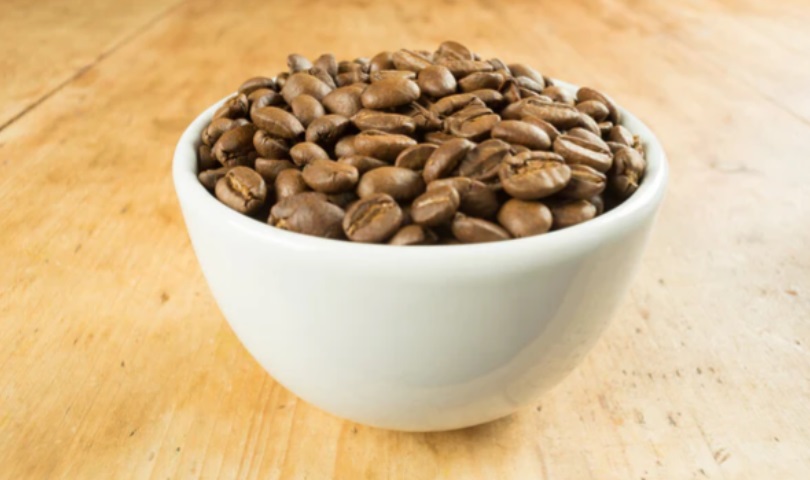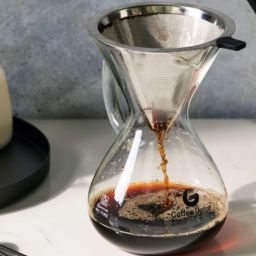
Blonde roast coffee, often known as a light roast, offers a milder, more delicate flavor compared to its darker counterparts. This coffee type is roasted for a shorter period, which not only preserves the unique flavors of the coffee bean but also maintains a higher caffeine content. The light color and dry surface of blonde roast beans reflect the minimal roasting they undergo, stopping just after the first crack in the roasting process.
A common misconception about blonde roast is that it is weaker or has less caffeine due to its lighter color. In reality, blonde roasts retain more of the original flavors and caffeine of the coffee bean, making them a preferred choice for those who appreciate a brighter, more vibrant cup of coffee.
Key Takeaways
- Distinct Flavor Profile: Blonde roast is celebrated for its mild and nuanced flavors, which can range from fruity to floral depending on the bean’s origin.
- Higher Caffeine Retention: Contrary to popular belief, lighter roasts like blonde roast actually retain more caffeine than darker roasts.
- Optimal Brewing Techniques: To fully enjoy the delicate flavors of a blonde roast, brewing methods such as pour-over and French press are recommended. These methods allow for better control over the extraction process, ensuring a clear and flavorful brew.
What Makes Blonde Roast Unique?
Blonde roast coffee stands out in the world of coffee due to its unique roasting process, which significantly affects its flavor, acidity, and caffeine content. Understanding what sets blonde roast apart from other roast levels can help you appreciate this lighter coffee option even more.
The Roasting Process
The process of creating blonde roast coffee involves roasting the beans for a shorter time and at lower temperatures compared to darker roasts. Typically, the beans are roasted just until the first crack—a point where the beans expand and make a cracking sound.
This stage usually occurs at temperatures between 356°F and 401°F. By stopping the roast at or shortly after this first crack, the beans maintain a lighter color and a denser structure. This method not only preserves the beans’ inherent flavors but also their natural caffeine content.
Comparison with Other Roast Levels
To put blonde roast in perspective:
- Light Roasts: Like blonde roasts, light roasts are also pulled from the roaster around the first crack. However, blonde roasts are often slightly lighter and less developed than standard light roasts, emphasizing the bean’s natural flavors even more.
- Medium Roasts: These roasts go a bit beyond the first crack, allowing a more balanced flavor with some roasting aromatics coming through. Medium roasts have less acidity than blonde roasts and a more rounded flavor profile.
- Dark Roasts: Dark roasts reach into the second crack, where the beans start to develop an oily surface and the flavors are dominated by the roasting process itself. These roasts have reduced acidity and increased bitterness, with much of the bean’s original flavors being overshadowed by smoky and burnt tones.
Impact on Flavor, Acidity, and Caffeine Content
The shorter roasting time and lower temperatures used for blonde roasts have several impacts:
Flavor: Blonde roast coffee is known for its vibrant and complex flavor profiles. The flavors can range from citrusy and floral to sweet and fruity, depending on the origin of the beans. These flavors are more pronounced because they are less masked by the roasting process.
Acidity: Blonde roasts typically exhibit higher acidity than medium or dark roasts. This is not about sourness; rather, it’s a bright, crisp quality that adds a complex character to the coffee. The acidity can be likened to the liveliness of a fresh fruit, which is appealing to many coffee enthusiasts.
Caffeine Content: Although it’s a common myth that darker roasts have more caffeine, the reality is that lighter roasts like blonde retain more caffeine. This is because caffeine diminishes slightly with extended roasting times. Therefore, blonde roasts can offer a slightly higher caffeine kick than their darker counterparts.
The Flavor Profile of Blonde Roast Coffee
Blonde roast coffee offers a distinct experience that sets it apart from medium and dark roasts. Its unique flavor profile, characterized by its acidity and body, influences not only the sensory experience but also the versatility of the coffee in various drinks.
Taste of Blonde Roast Coffee
Blonde roast coffee is often celebrated for its vibrant and nuanced flavors. Unlike darker roasts, which tend to overshadow the bean’s natural flavors with smokiness or burnt notes, blonde roasts retain the original characteristics of the coffee bean. You might taste hints of citrus, floral notes, or even sweet undertones like berry or chocolate, depending on the bean’s origin. This wide array of flavors is due to the light roasting process, which minimally alters the beans’ inherent qualities.
Acidity in Blonde Roast
One of the most notable features of blonde roast coffee is its acidity. This doesn’t mean the coffee is sour; rather, it has a brightness that can be likened to the zest of an orange or the tang of a berry. This acidity makes the coffee more refreshing and provides a complex flavor profile that can be a pleasant wake-up call for your taste buds. It’s this crisp acidity that often makes blonde roast a favorite among those who prefer a lively cup of coffee.
Body of Blonde Roast Coffee
Blonde roast coffee generally has a lighter body, which means it feels lighter or thinner on the palate compared to the rich, creamy texture of darker roasts. This light body complements its high acidity and intricate flavor notes, making blonde roast a subtle yet complex choice suitable for those who appreciate the finer details in coffee tasting.
Impact on Drinking Experience
The combination of a light body and high acidity in blonde roast coffee leads to a refreshing and energetic drinking experience. It’s less likely to feel heavy or overly filling, making it an excellent choice for coffee lovers who enjoy drinking multiple cups throughout the day. The subtle yet distinct flavor notes also make blonde roast a great coffee to savor slowly, perhaps as a morning ritual or a mid-afternoon break.
Pairings and Uses in Coffee Drinks
Blonde roast coffee is incredibly versatile due to its mild flavor and high acidity. It pairs wonderfully with light pastries, such as croissants or scones, which complement its bright notes without overpowering them. In coffee drinks, blonde roast performs well in methods that highlight its delicacy, such as pour-over or Aeropress, where the precision of water flow and temperature can be controlled to extract its best flavors.
Furthermore, blonde roast can be a delightful base for iced coffee drinks. Its inherent sweetness and vibrant flavors are enhanced when cooled, making it a refreshing choice for iced lattes or cold brews. The light body ensures that the drink remains crisp and enjoyable even when diluted with ice.
Brewing Techniques for Blonde Roast Coffee
Brewing blonde roast coffee effectively requires understanding the unique characteristics of this lighter roast. Here’s a guide to help you extract the best flavors from your blonde roast beans using various brewing methods, along with essential tips on grinding, water temperature, and coffee-to-water ratios.
Choosing the Right Brewing Method
To bring out the subtle and delicate flavors of blonde roast coffee, certain brewing methods are more effective:
- Pour-Over: This method is ideal for blonde roasts because it allows precise control over the brewing time and temperature. The slow and steady water flow extracts the coffee’s bright and fruity flavors without overpowering them.
- French Press: Known for producing a full-bodied coffee, the French press is surprisingly effective for blonde roasts, emphasizing the coffee’s inherent sweetness and light body.
- Aeropress: This method is excellent for achieving a clean and flavorful cup with more control over the extraction. It’s particularly good at highlighting the nuanced flavors of blonde roast.
Grinding for Blonde Roast
The grind size for blonde roast should be adjusted based on your brewing method:
- Pour-Over: Use a medium-fine grind to balance extraction speed and flavor. Too fine and you may extract too much bitterness; too coarse and the coffee could be under-extracted, tasting weak.
- French Press: Opt for a coarser grind to prevent over-extraction and the resulting bitterness that can mask the subtle flavors of the blonde roast.
- Aeropress: A fine to medium grind works best, offering a quick extraction while still allowing the intricate flavors to shine through.
Water Temperature and Coffee-to-Water Ratios
Water temperature and coffee-to-water ratios are critical for brewing the perfect cup of blonde roast:
Water Temperature: Aim for a range of 195°F to 205°F. Since blonde roasts are more delicate, the lower end of this spectrum can help preserve the coffee’s subtle flavors without introducing bitterness.
Coffee-to-Water Ratio: A general guideline is to use 1 gram of coffee for every 16 to 18 milliliters of water. This ratio can be adjusted slightly based on personal taste preferences and the specific characteristics of the coffee bean.
Tips for Brewing
Especially when using paper filters in pour-over or Aeropress methods, rinsing the filter with hot water first can remove any papery tastes and preheat your brewing vessel.
Blonde roasts generally benefit from a shorter brew time to avoid extracting undesirable flavors. Experiment within a range of 2 to 4 minutes depending on the method.
When using a French press or Aeropress, give your coffee grounds a good stir after adding water to ensure even saturation and a balanced extraction.
FAQs
How does blonde roast differ from other light roasts?
Blonde roast is a unique category within light roasts primarily because of its very light color and minimal roast flavor. While both blonde and other light roasts are stopped shortly after the first crack in the roasting process, blonde roast is typically pulled from the heat a bit sooner. This results in a bean that retains more of the original flavors and caffeine of the coffee bean, with a higher acidity and a more pronounced sweetness than other light roasts.
Does blonde roast coffee have more caffeine?
Yes, blonde roast coffee generally contains more caffeine than darker roasts. The roasting process burns off some caffeine, so the less time the beans spend roasting, the more caffeine they retain. Since blonde roasts are subjected to heat for a shorter duration, they keep more of their natural caffeine.
How should blonde roast coffee be stored to preserve freshness?
To maintain the freshness and flavor of blonde roast coffee, store the beans in an airtight container in a cool, dark place. Avoid exposure to air, light, moisture, and heat as these can degrade the coffee beans quickly. For optimal freshness, it’s also recommended to buy whole beans and grind them just before brewing.
Final Thoughts
Blonde roast coffee offers a distinct take on the traditional coffee experience, emphasizing the bean’s natural flavors without the heavy influence of roasting. It’s celebrated for its vibrant and complex flavor profile, which can range from citrusy and floral to sweet and fruity. This lighter roast is not only a testament to the roaster’s craft but also an invitation to explore the subtleties of coffee flavors.









